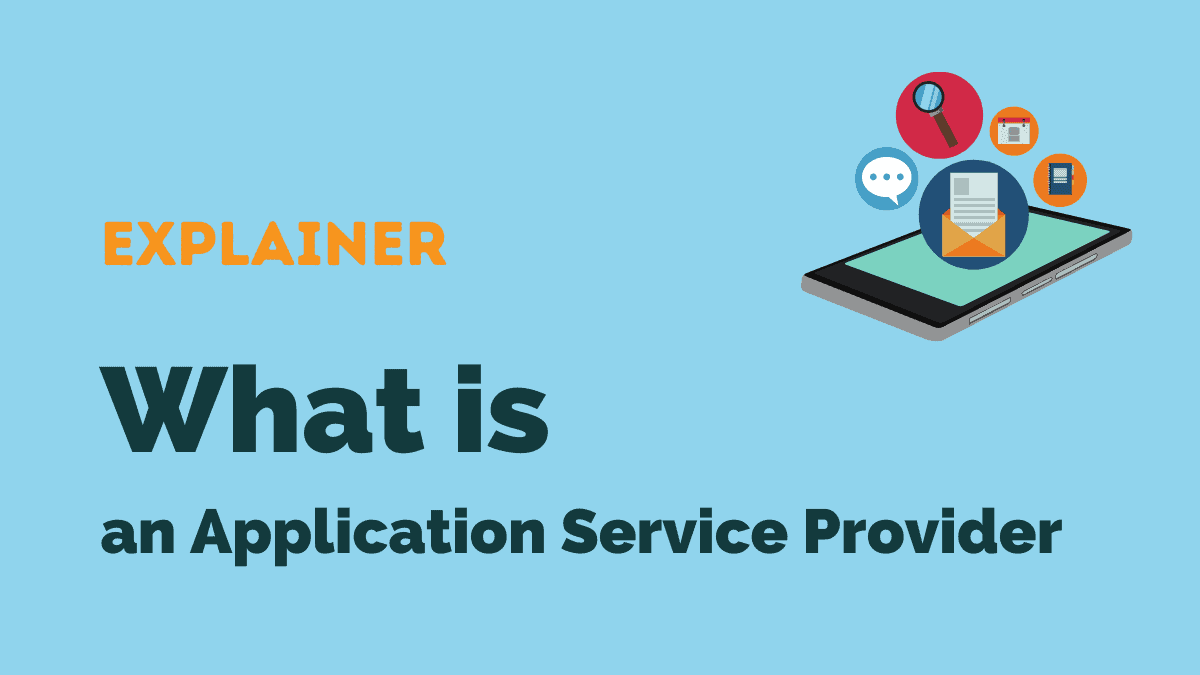In this post:
- What is an application service provider?
- How does an ASP work?
- Is an ASP the same as SaaS?
- Pros of ASP
- Cons of ASP
What is an application service provider?
An Application Service Provider (ASP) is an organization that offers applications and software to customers via the Internet.
(Call center CRM software is typically a good example of this.)
The ASP manages the infrastructure and runs these programs for you, so you don’t have to set up your own servers or worry about maintenance.
There are plenty of good reasons to use ASPs, but it’s important to understand the potential limitations too!
So let’s cover some of the pros and cons of ASPs.
How does an application service provider work?
An ASP provides its clients with a stable application that can be accessed from anywhere.
This means that the client organization can save on resources and staff and still keep their infrastructure running.
Businesses often work with an ASP when they need a software product which they can’t buy of build for themselves, like social media marketing automation tools or cloud helpdesk software.
Is an ASP the same as SaaS?
In a word… no.
There is some overlap because both business models involve a hosted solution. Both ASP and SaaS companies will provide you with access to a technical product because it is cheaper or easier than creating one yourself.
The main differences are:
- ASPs often provide access to 3rd party software which they did not develop. SaaS companies meanwhile almost always provide access to their own software.
- ASPs are ‘single tenant’; each client company has its own instance of the software and infrastructure. SaaS meanwhile is multi-tenant, meaning many clients access a single, integrated code base simultaneously.
- ASPs almost always have fixed pricing. Clients buy access via a license, for a defined period. SaaS is different because pricing is linked far more closely to actual usage, in a ‘pay-as-you-go’ model.
Why do businesses want to work with ASPs?
Historically, the ASP business model has appealed to SMEs which could not realistically afford to buy or develop proprietary software.
Licensing that software from a 3rd party vendor is essentially like leasing a car that you can’t afford to buy.
In addition to lower costs, ASPs take on the responsibility for maintenance and upgrades.
There are some general benefits as well: improved productivity, high availability coupled with reduced downtime due to patches and upgrades, increased scalability because you’re not managing hardware and software, and reduced administrative tasks because of automation.
Pros of an ASP
- Access to software. The foundational concept with an ASP is that they can provide access to software which would otherwise be unaffordable or otherwise out of reach.
- 24/7 support. ASPs have a contractual responsibility to resolve issues. This usually involves around-the-clock support and uptime SLAs.
- Reduced costs. These flow from reduced internal IT burden and more efficient automated processes.
- Integration may get easier. May software integration issues move off of the client’s to-do list and onto the ASP’s.
- IT systems function more effectively. The reliability, availability, scalability and security of internal IT systems can improve dramatically when client businesses can redistribute internal resources and offload BAU work to their ASP.
An ASP can be less expensive than running your own servers and equipment. (Although still not quite the best way to reduce customer acquisition or retention costs!)
They are often able to provide a better experience for the end-user because they have consolidated resources, so it’s not like you’re relying on multiple companies with different performance levels simultaneously.
Cons of an ASP
- Vendor lock-in. Once a client business starts working with an ASP, it can be expensive and challenging to end the relationship.
- Functionality and customization can be limited. A good sales pitch can be enough to convince a client that a certain ASP is right for them. However, even if a tool meets your business’s current needs, there’s no guarantee that it will continue to meet your future needs.
- Integration may get harder. Yes, integration is both a pro and a con! It comes down to the kinds of tools you depend on, and how flexible your ASP is. They may not be in a position to integrate every tool, creating new silos.
- You could lose control of corporate data. A lot of Application Service Providers require clients to migrate their data in order to use their product. That can be an issue for many reasons!
- The single-tenant model can limit you. Single tenancy is almost a product feature from another era. It limits the speed and flexibility with which providers can update the software, which in turn limits scalability.
While there are many potential downsides to using an ASP, there are also benefits that may make them worth considering in certain situations.
Using an ASP is a good option for SMEs that want to get up and running quickly and don’t need to customize their own server setup.
That being said, it’s hard to think of a scenario where a good SaaS platform isn’t better, cheaper and more scalable!





